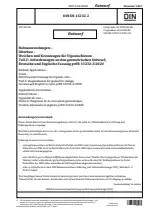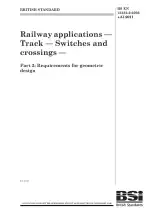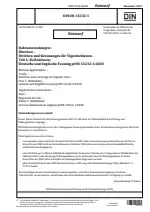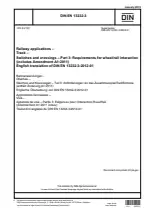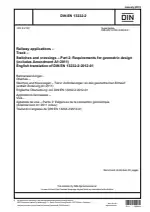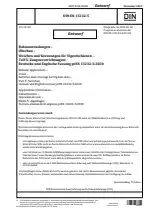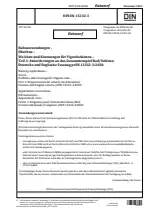Railway applications - Track - Switches and crossings for Vignole rails - Part 2: Requirements for geometric design
Also Known As:
The DIN EN 13232-2 standard is a part of the railway applications standard that specifically focuses on the requirements for geometric design of switches and crossings for Vignole rails. This standard provides guidelines and principles for various aspects of track design, including wheel guidance, limits of supply, applied forces, and tolerance levels.
The standard highlights the importance of geometric design principles for ensuring proper wheel guidance. It defines the basic limits of supply, which include factors such as dimensions, clearances, and profiles, that need to be adhered to in the design and construction of switches and crossings.
Furthermore, the standard addresses the applied forces and their adequate support to ensure structural integrity and safety. It specifies the tolerance levels that must be maintained to ensure smooth operation and reduce the risk of derailment.
The standard also focuses on the design considerations for turnouts, with the main switch and crossing components being represented. The principles discussed in this standard apply not only to turnouts but also to more complex track layouts.
| Descriptors | Acceptance (approval), Acceptance inspection, Acceptance specification, Crossings, Definitions, Design, Diamond crossings, Dynamics of vehicle movement, Efficiency, Formulae, Geometry, Level crossings, Performance, Permanent ways, Point work, Railway applications, Railway construction, Railway installations, Railways, Specification (approval), Supply schedule, Switches, Testing, Tolerances (measurement), Tracks (materials handling equipment), Travel ways, Turnouts, Vignol rail, Wheel guidance, Power, Superstructure, Output capacity, Sheets, Roadways, Pavements (roads) |
| ICS Codes | 93.100 - Construction of railways |
| Language(s) | English + German |
| File Size | 2.5 MB |

